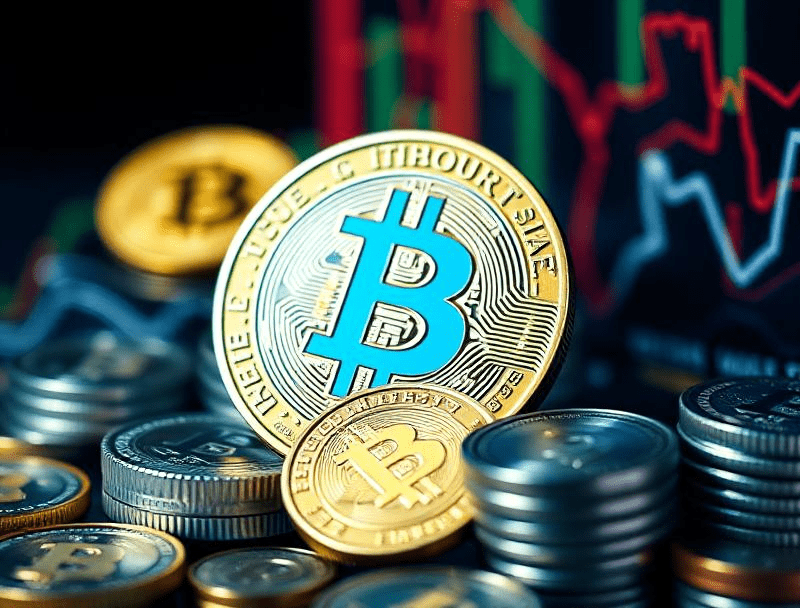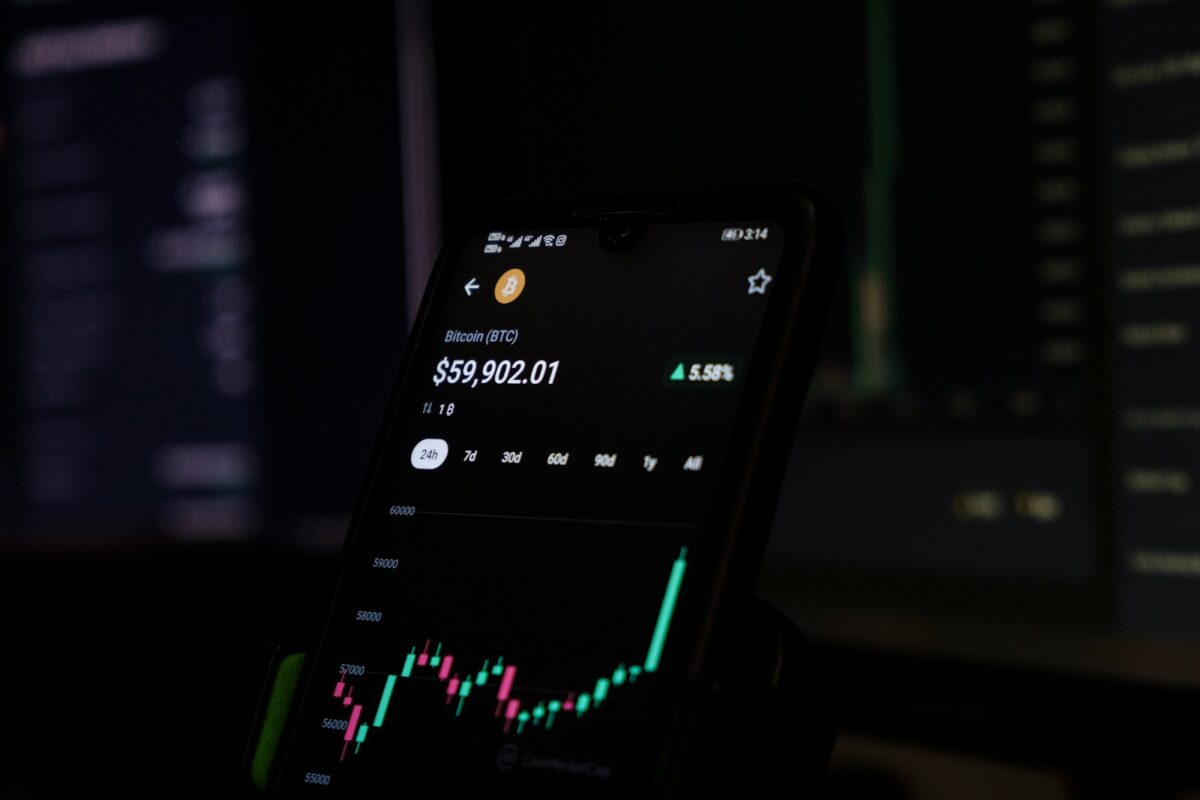
Cryptocurrency supply types

Scarcity is the fundamental driver of value within decentralized digital assets. The distinction between total issuance and maximum cap determines how rarity evolves over time, directly influencing long-term appreciation potential. Projects with a fixed upper limit on tokens create a predictable ceiling that fosters deflationary pressure as demand increases, contrasting sharply with those employing unlimited emission schedules.
The mechanics of circulation affect inflation rates embedded in tokenomics frameworks. Continuous creation of new units dilutes existing holdings, reducing purchasing power unless accompanied by proportional network growth or utility expansion. Conversely, systems with capped totals promote scarcity-induced value retention but may face challenges sustaining operational incentives without inflationary rewards.
An exploration of these economic structures reveals how design choices impact market dynamics and investor confidence. Understanding whether the aggregate availability is fixed, gradually increasing, or subjected to burn mechanisms equips one to predict deflationary trends and assess long-term sustainability. This analysis bridges theoretical economics with practical implications for asset valuation and strategic participation.
Cryptocurrency supply types
The distinction between circulating, maximum, and total units plays a fundamental role in shaping the economic dynamics of digital assets. Circulating quantity refers to the number of tokens actively available for trading and use, directly influencing market liquidity and perceived value. Maximum cap defines the upper boundary on token issuance, ensuring scarcity which can counteract inflationary pressures by limiting future additions. Total count includes all tokens mined or allocated, whether circulating or locked, impacting tokenomics strategies such as vesting schedules or reserve allocations.
Scarcity is engineered through these parameters to establish predictable monetary policy within blockchain ecosystems. For example, Bitcoin’s fixed maximum of 21 million coins enforces a hard cap that introduces deflationary tendencies over time as issuance slows via halving events. Conversely, Ethereum operates with no explicit ceiling but employs mechanisms like burning fees to modulate its total emission and influence inflation rates. Understanding these distinctions enables accurate assessment of asset sustainability and long-term valuation trends.
Supply Metrics Impact on Inflation and Deflation
The interaction between circulating quantity and maximum availability directly affects inflationary or deflationary environments. Inflation occurs when new tokens enter circulation at a rate surpassing demand growth, diluting individual holdings’ value. Stablecoins typically aim for stable supply matching real-world reserves, minimizing inflation risk. In contrast, deflation manifests when tokens are removed from circulation permanently–through methods such as token burns–creating upward pressure on price due to reduced availability.
A practical case study involves Binance Coin (BNB), which incorporates quarterly burn events reducing total units in existence, systematically decreasing supply to enhance scarcity while incentivizing holders. This mechanism showcases how programmed adjustments to overall token presence influence economic behavior within decentralized ecosystems.
An additional layer involves understanding how protocols manage token release schedules embedded in their consensus algorithms or smart contracts. Gradual release mechanisms promote network stability by avoiding sudden shocks in available quantities that could trigger extreme price volatility or speculative bubbles. Tokenomics design must balance incentivization of participation against preserving intrinsic worth through careful control over emission rates and locked reserves.
The relationship between scarcity imposed by maximum limits and circulating quantities informs investment decisions grounded in economic fundamentals rather than speculation alone. Encouraging rigorous analysis of these factors fosters deeper comprehension of market dynamics beyond surface-level metrics. Investigating diverse implementations across projects reveals evolving methodologies harnessing cryptoeconomic principles to engineer resilient financial instruments adaptable to changing ecosystem demands.
Understanding Circulating Supply
The circulating amount of tokens represents the quantity actively available for trading and use within a network, excluding locked, reserved, or burned units. This metric is fundamental for evaluating market capitalization, liquidity, and tokenomics dynamics as it directly influences scarcity and inflationary pressures. Investors and analysts rely on this figure to discern how much of the total issuance truly participates in economic activity.
Unlike the maximum issuance, which denotes the absolute upper limit of tokens that can ever exist, circulating quantity fluctuates based on protocol policies such as staking locks, vesting schedules, or deflationary mechanisms. Understanding these distinctions allows for accurate assessment of supply-driven market behavior and potential value retention or depreciation due to inflationary trends.
Technical Aspects and Economic Implications
Circulating tokens form the backbone of a network’s economics by defining what portion of total issuance fuels transactions and trade. For example, Bitcoin’s maximum cap at 21 million coins contrasts with its current circulation nearing 19 million; this gap arises from mining rewards yet to be unlocked. Such scarcity fosters deflationary characteristics since new supply diminishes over time.
Conversely, projects with uncapped or inflationary models may see circulating amounts increase indefinitely. Ethereum’s monetary policy initially lacked a fixed maximum but incorporated burning mechanisms post-EIP-1559 to introduce deflationary pressure by removing part of transaction fees from circulation. These adjustments highlight how manipulating circulating figures alters scarcity perception and value stability.
- Total units: The entire token count including non-liquid reserves
- Maximum cap: Absolute issuance ceiling defined by protocol rules
- Circulation: Actively tradable tokens impacting market liquidity
- Burned supply: Permanently removed tokens reducing effective availability
The influence of circulating volume extends into tokenomics design where governance decisions might lock tokens during periods of strategic development or incentivize holders through staking rewards that temporarily reduce liquidity. Each mechanism modifies actual supply accessible to participants, thus affecting perceived scarcity and potential price appreciation due to constrained availability.
A practical approach involves monitoring changes in circulation alongside network activity metrics such as transaction counts or wallet distribution patterns. This synthesis can reveal whether increased liquid tokens contribute to inflation risks or if restrictive policies maintain deflationary conditions supporting long-term value growth. Experimental data from block explorers and analytics platforms serve as valuable tools for validating hypotheses about token flow dynamics within decentralized ecosystems.
Differences Between Max And Total Supply
The maximum quantity of tokens in a blockchain project represents the absolute upper limit of units that will ever be created. This figure is fixed by the protocol and cannot be exceeded, serving as a critical factor in understanding scarcity and long-term value preservation. For instance, Bitcoin’s maximum cap stands at 21 million coins, defining its deflationary nature and influencing market perceptions regarding its resistance to inflationary pressures.
The total amount issued includes all tokens currently generated or minted, encompassing those circulating in the market plus those held in reserve or locked within smart contracts. Unlike the maximum threshold, this number can increase over time until it reaches the predefined ceiling. Ethereum’s evolving issuance model illustrates this well: while no explicit maximum exists, mechanisms like EIP-1559 aim to reduce net token creation, impacting total availability dynamically.
Economic Implications of Maximum vs Total Figures
Understanding the distinction between these two metrics is essential for analyzing tokenomics through an economic lens. The maximum limit imposes a hard boundary which supports scarcity, often leading to deflationary tendencies if demand remains steady or grows. In contrast, an expanding total count without a capped maximum may introduce inflationary effects, diluting value unless offset by utility or burn mechanisms. Projects with fixed maxima tend to attract investors seeking protection against dilution-induced devaluation.
Circulating amounts–the subset actively exchanged–also play a vital role in price discovery and liquidity assessment but do not necessarily reflect scarcity accurately without considering total and maximum quantities together. By experimentally comparing assets such as Litecoin (maximum 84 million) with Ripple (no fixed limit), one observes how inflationary policies affect purchasing power and user incentives differently across ecosystems, offering fertile ground for further empirical studies on economics within distributed ledgers.
Impact Of Supply On Price
The circulating quantity of tokens directly affects their market value by influencing scarcity and inflation dynamics within a network. When the volume accessible for trading increases without corresponding demand, it often triggers downward pressure on price due to dilution of value. Conversely, a limited distribution combined with rising interest can enhance perceived rarity, thereby elevating worth.
Understanding total issuance versus actively available units is critical in tokenomics analysis. Some projects maintain a maximum cap on the number of tokens that can ever exist, which introduces an upper boundary restricting infinite expansion and mitigating inflationary risks. This design choice impacts long-term valuation models by defining fixed supply ceilings.
Inflation mechanisms embedded in protocol rules systematically increase token count over time, aiming to incentivize participation or secure consensus but simultaneously exerting pressure on unit prices. For instance, block rewards in proof-of-work systems add newly minted coins regularly, growing circulating amounts and potentially diluting individual token value unless offset by proportional demand growth.
Scarcity effects are observable in deflationary models where token burns or capped issuance reduce effective availability. Binance Coin’s periodic burn events exemplify this approach; by removing tokens from circulation permanently, the project fosters scarcity that supports upward price trends over extended periods. Such interventions highlight deliberate economic engineering to influence market perception and valuation.
A comprehensive evaluation requires distinguishing between nominal supply figures and the actual liquid tokens moving through exchanges and wallets. Locked or staked assets temporarily removed from circulation can create artificial scarcity that may elevate short-term prices but revert as these holdings unlock. Therefore, monitoring circulating balances alongside total minted quantities offers deeper insights into price behavior.
Empirical data across multiple networks shows that transparent policies governing emission rates, maximum caps, and locking schedules correlate strongly with investor confidence and stable asset appreciation. Researchers should consider integrating on-chain analytics with macroeconomic indicators to model how varying distributions impact value trajectories under different demand scenarios for robust forecasting.
Conclusion: Advanced Techniques for Monitoring Token Circulation Dynamics
Precise tracking of asset distribution fluctuations is indispensable for evaluating the effects of scarcity and inflationary pressures within decentralized ecosystems. Employing on-chain data analytics alongside algorithmic models enables real-time observation of circulating amounts relative to their maximum issuance, offering critical insights into deflationary trends and tokenomics-driven value shifts.
Advanced methodologies such as burn rate monitoring, vesting schedule analysis, and supply cap verification provide a multidimensional view of total units in existence. These approaches reveal subtle economic forces shaping market behavior–where contractionary mechanisms intensify scarcity, bolstering value, while expansive issuance risks diluting purchasing power through inflation.
Key Technical Insights and Future Directions
- Dynamic Supply Analytics: Leveraging smart contract event logs to quantify minting and burning activities enhances accuracy in understanding net changes beyond static snapshots.
- Integrating Off-Chain Data: Combining on-chain metrics with external economic indicators refines models predicting value trajectories influenced by macroeconomic factors.
- Tokenomics Simulation Tools: Developing predictive frameworks that incorporate maximum token caps and emission schedules aids in forecasting inflationary or deflationary regimes under various protocol governance scenarios.
The continuous refinement of these techniques will deepen comprehension of how monetary policy embedded within blockchain protocols impacts asset valuation over time. Identifying causal links between circulating quantity adjustments and market dynamics empowers stakeholders to design more resilient economic models that harmonize scarcity with sustainable growth.
This analytical rigor invites further exploration into programmable monetary supply controls, potentially enabling adaptive mechanisms that respond autonomously to shifting demand patterns–heralding a new era where token circulation management aligns seamlessly with broader economic principles to optimize intrinsic worth.


